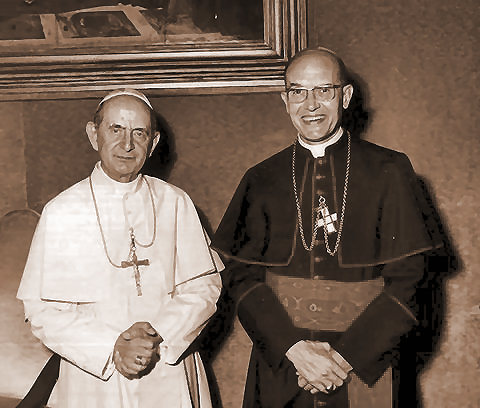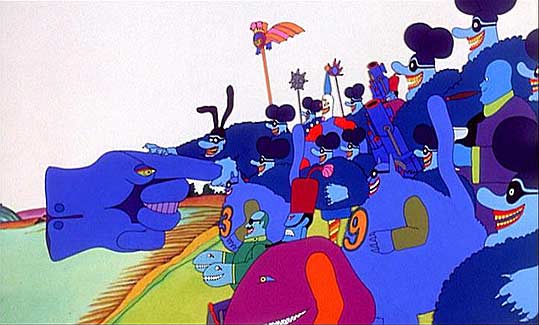Why Not A Red Hat?
Former Papal Envoy to the U.S., Archbishop Jean Jadot of Belgium, died last week at the age of 99. Jadot’s predecessor and successor as papal delegates to the U.S. received the red hat of a cardinal. Jadot never received one in recognition of his work here. In fact, he is the only Vatican diplomat assigned to the United States that was never made a cardinal. Why not a red hat? 
In 1973, Pope Paul VI sent Archbishop Jadot to Washington, DC to serve as the apostolic delegate to the United States. The pope told him he was chosen partly because he was not part of the Vatican bureacracy, and thus might not be as pliable in the hands of powerful American bishops; who to Paul VI’s view were often more businessman than pastor. Jadot was sent to press the American church to carry out the reforms of Vatican II, and find candidates for future episcopal appointments who were willing to do so.
Although largely undone by the conservative appointments of Pope John Paul II, Jadot had a hand in over 100 nominations, including such well known names as Roger Cardinal Mahoney of Los Angeles, Joseph Cardinal Bernadin of Chicago, Archbishop Raymond Hunthausen of Seattle, Archbishop Rembert Weakland in Milwaukee, Archbishop Francis Hurley of Anchorage, and Bishop Walter Sullivan of Richmond, Virginia. All of these bishops have made an effort to outreach to Catholics on the margins, including gay people.
As a Washington Post article said in 1983, “Whatever their background, the new breed of bishops was less concerned with the ring-kissing and watered silk vestments that went with the office, and more with getting to know their people.”
Paul VI saw an evolving role for his nuncios after Vatican II. “Nuncios should travel,” Paul VI said, not so much as the representatives of Rome to secular governments, or even as legates between Rome and the world’s bishops. Instead, they should “show the Pope’s concern for the poor, the forgotten, the ignored.”
Although Archbishop Jadot strongly adhered to most of the church’s teachings, including its opposition to abortion, he was willing to leave some issues, like artificial contraception, to individual consciences. He also helped to lead a largely successful effort to push the American church to welcome minorities, widen the role of women, increase participation by the laity and relax some rules, like the automatic excommunication of divorced people.
In A Watchman for the House of Israel , his November 9, 1976 address to the general meeting of the U.S. Conference of Catholic Bishops, Jadot called attention to the situation of minorities in the American church: “How are we to give pastoral care to those who do not feel at home with our white, Western European ways of public worship and community living, to those who have not adapted and do not want to adapt to what we call our American way of doing things?”
He added, “I wonder if the majority of our priests and people realize our shortcomings in these areas and even our arrogance toward our brothers and sisters in the faith who are in some ways different from ourselves. I wonder if we can ever fully understand the legitmate frustrations that they feel.”
He could have been speaking about how gay Catholics feel treated by their church.
In his concluding remarks, the apostolic delegate called brief attention to two other areas of concern that the bishops would have to follow up on: “There are other problems either near or far on the horizon. I could mention the question of the role of women in society and in the church or problems that will come from the rejection of the traditional standards of morality in society, political and business life.”
Jadot concluded his address to “my brother bishops” by saying: “Let us be confident, courageous and open to the Spirit. Let us build the church of God by our foresight.”
After this address the apostolic delegate became the target of bitter animosity from conservative bishops and laypeople. He received a steady flow of anonymous hate mail telling him to get out of the United States and go back to Belgium. He was also being denounced at the Vatican. At one point, Jadot offered his resignation to Paul VI, who responded immediately by saying, “No. You are doing just what I want you to do.”
The anti-Jadot campaign was allegedly spearheaded by Cardinals John Carberry of St. Louis, John Krol of Philadelphia and John Cody of Chicago. Polish-American Cardinal Krol had the ear of John Paul II and eventually convinced him Jadot was “destroying the Catholic church in the United States.” Cardinal Cody was opposed to Jadot because he knew personally that Jadot had asked Paul VI to remove him. 
When John Paul II became pope, Archbishop Jadot was relieved of his position and given a minor post. The fact he was not honored with the customary red hat was the subject of a September 7, 2002 article in the Tablet by veteran Vatican reporter Robert Blair Kaiser.
“The Jadot I found in Brussels,” Kaiser wrote, “did not strike me as a man who was nursing any grievences. He knew he had done a fine job – for Paul VI and for the Church. He refused to speculate about why he did or did not become a cardinal, and had good words, moreover, for some in the Roman Curia. He said he liked Cardinal Gianbattista Re. “I trust him very much. He’s in the category of honest people.”
“I asked him how many cardinals he in put in that category.”
“Jadot hesitated, then laughed. ‘I don’t know all the cardinals,’ he said.”
But Jadot may have expressed his private feelings to his good friend and biographer, theologian Dr. John (Jack) Dick, the day his successor, Archbishop Pio Laghi, who appointed conservative bishops, was named a cardinal on May 29, 1991. That day, after lunch, Jadot said, “It is a slap in my face.”
Dr. Dick, now retired from the University of Louvain in Belgium, is completing a book about Jadot titled Paul’s Man in Washington. Perhaps the book will reveal things Jadot was too much of a diplomat and a gentleman to ever mention directly.
On the other hand, when it came time to select a new archbishop in Vienna in 1986, John Paul II picked Hans Hermann Groer, a Benedictine abbot, because he had met the man at a Marian conference and was impressed for one reason alone: his obvious devotion to Our Lady. (Cardinal Franz Konig got the news about Groer’s appointment on television.) A few years later, Groer had to retire after allegations that he had been seducing the young men at his monastery.
